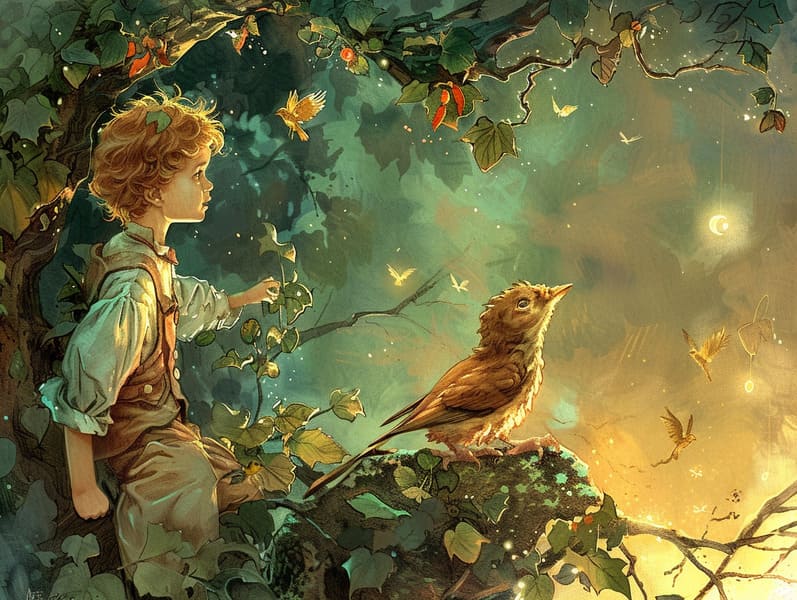The Evolution of Famous Fairy Tales with the Undying Grandeur.
The Evolution of Famous Fairy Tales with the Undying Grandeur.
Blog Article

Fairy tales for kids have long histories. These tales have been relayed from one generation to the next ages before they were ever published. They were born from a variety of cultures, including American traditions. They were initially passed along among elders, often carrying themes and messages reflective of the societal norms and beliefs of the time.
The famous Grimm duo, the two Grimm brothers, were among the first to compile and publish many of these beloved narratives. Their anthology, "Grimm's Story Collection," included stories like "Cinderella," "Hansel and Grethel," and "Snow White," which have since become hallmarks in the world of classic fairy tales. Similarly, Hans Andersen's fanciful narratives, such as "The Sea Maid," and "The Duckling that Could," have captivated hearts worldwide, establishing their place in the pantheon of timeless fairy tales.
Though they are centuries old, classic fairy tales remain as important as ever, especially as children's bedtime stories. These enchanting tales are now available in different formats, including richly illustrated books, charming animations, and internet fairy tales.
Their lasting presence can be traced to several charming aspects:
Key Lessons: Classic fairy tales often impart important moral lessons. Narratives like "The Story of the Boy Who Cried Wolf" teach the benefit of truthfulness, while "The Race of the Tortoise and the Hare" stress the qualities of tenacity and unassuming nature. These narratives offer kids clear distinctions between right and wrong, guiding their moral compass in a mild yet deep way.
Empathy and Understanding: Timeless fairy tales frequently depict personalities facing trials and tribulations, encouraging audiences to connect with their struggles and cheer for their triumphs. For instance, "Beauty's Beast" shows us the merit of seeing beyond the surface to know the true character of a person, fostering compassion and discernment.
Cultural Perception: Many timeless fairy tales are saturated in the cultural contexts from which they arose. Delving into these tales can provide intriguing perspectives into different customs, building a sense of cultural appreciation and awareness.
Creativity and Fantasy: The magical elements in traditional fairy tales—enchanted objects—encourage children’s visions and dreams. These narratives lead readers to fantastical realms, kindling creative ideas and a sense of awe that remains a lifetime.
Old fairy tales are not only entrancing but also teaching. They serve as charming tools in fostering various cognitive and affective skills in the young. When traditional fairy tales are told out loud, they advance language skills by presenting new language items and elaborate sentence structures. This practice also cultivates listening abilities and concentration, as little ones track the narrative, looking forward to see what happens next.
Furthermore, examining the themes and characters of timeless fairy tales can enhance intellectual skills and analytical skills. The young are guided to identify patterns, anticipate outcomes, and realize cause and effect. These analyses also support the young utter their thoughts and feelings, advancing their emotional intelligence.
In today’s technological age, the presence of internet fairy tales has made these tales more acquirable than ever. Web platforms and web apps present comprehensive collections of old fairy tales that can be looked at or heard anytime, anywhere. Fairy tales recited are particularly well-received, featuring an delightful method for little ones to be a part of these fascinating tales. Sound books and narrated videos lead characters and settings to life, often complemented by enchanting soundtracks and music that improve the story journey.
The timeless allure of old fairy tales lies in their ability to evolve to current times while continuing with their core values. Contemporary takes of these narratives often bring in more inclusive protagonists and modern settings, making them meaningful to today’s audience. However, the basic principles of bravery, understanding, and equity remain unchanged, continuing to touch kids of all ages.
Old fairy tales also offer a sense of solace and recognition. They offer a neat narrative with a obvious beginning, middle, and end, often ending with the culmination of conflicts and the triumph of goodness over badness. This foreseeability can be easing for little ones, sharing a sense of steadfastness in an variable world.
Old fairy tales continue to captivate and teach new generations, maintaining their allure and importance in modern society. As bedtime stories for kids, they disclose a perfect blend of charm and understanding, enhancing moral values, empathy, and creativity. The availability of internet fairy tales and the in demand status of fairy tales spoken warrant that these classic tales remain accessible to new generations.
By maintaining and divulging these fairy tales, we continue to honor the rich tapestry of storytelling and cultural heritage. Whether you are delving into a gorgeously illustrated book, experiencing a cyber collection, or listening on an audio story, the magic of traditional fairy tales is always within reach. These stories teach us of the steadfast essence of fairy tales and its ability to hold us together across time and space.
Whether you are seeing a vibrantly illustrated book, browsing a electronic library, or listening to an audiobook, the wonder of ancient fairy tales is always within reach.
These stories convey of the consistent presence of stories and its ability to connect us across time and space, making a tie popular fairy tales with morals that delights and instructs alike.